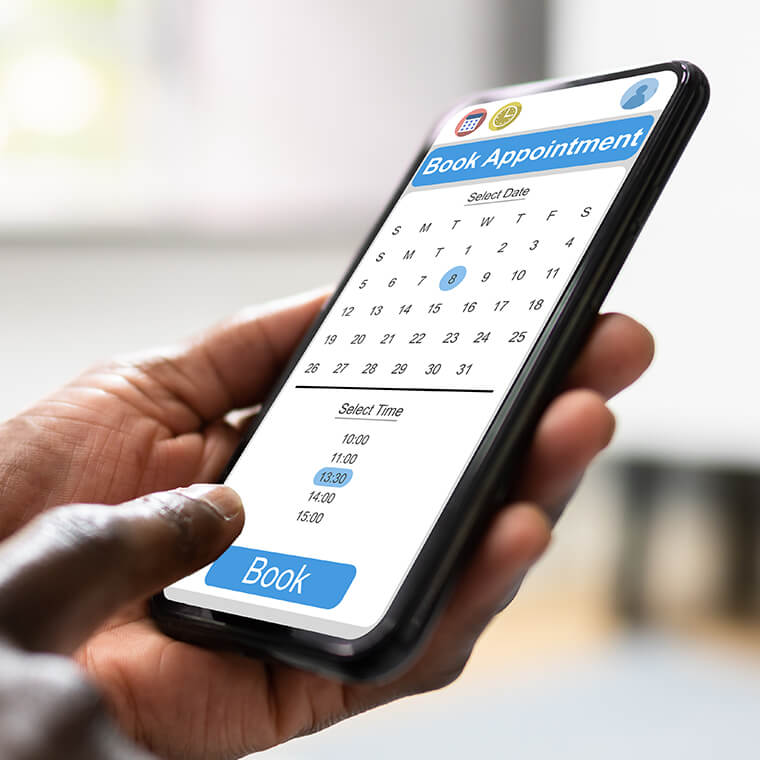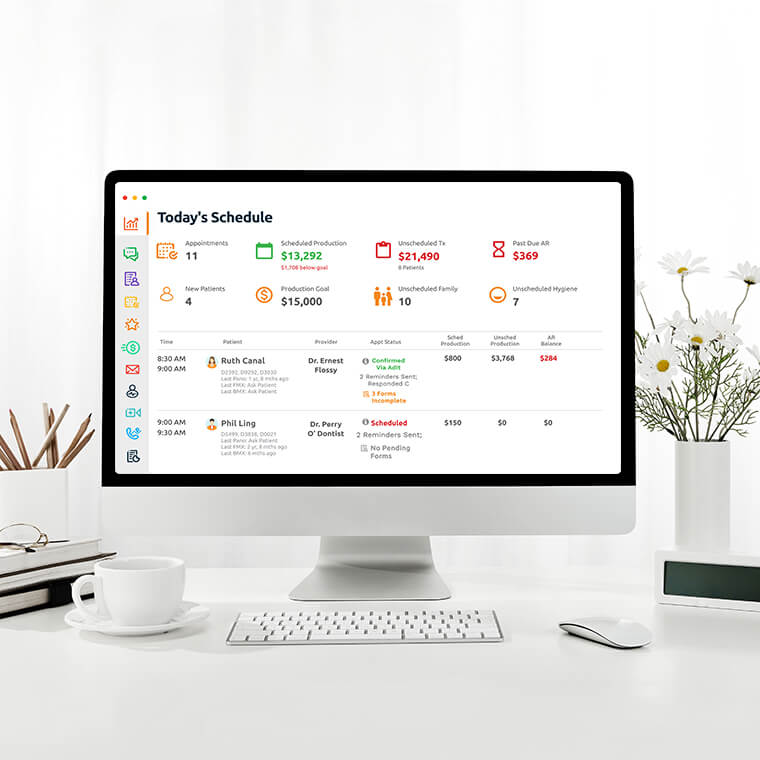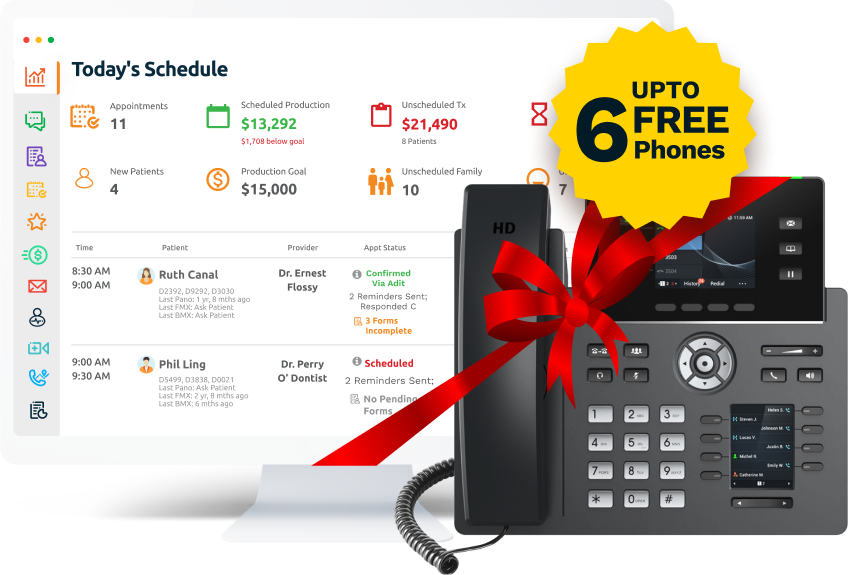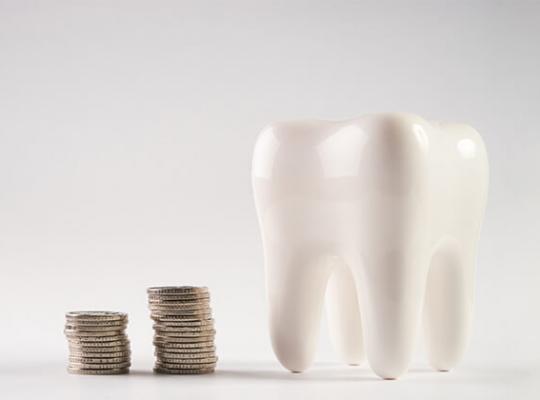Ends in
ends in 127 Days

ends in 127 Days

ends 11 July
From Check-In to Check-Out: Crafting a Seamless Patient Journey

Creating a seamless patient journey from the moment they step into the dental clinic to the time they leave is crucial for maintaining patient satisfaction and loyalty. In today’s competitive healthcare landscape, patients expect efficiency, transparency, and personalized care. As dental professionals, it is essential to meet these expectations to ensure a positive experience and foster long-term relationships.
This article explains the challenges dental patients face at different stages of their visit and how implementing the right strategies and dental software can address these issues effectively.
Top Challenges Dental Patients Face At Check-In

The check-in process sets the tone for a patient's entire visit to the dental clinic. Unfortunately, this step often involves several obstacles that can frustrate patients and negatively impact their overall experience. By understanding and addressing these challenges, your office can significantly improve patient satisfaction from the very beginning.
Paperwork Issues
One of the most common frustrations patients face during check-in is dealing with paperwork. Traditional paper forms require patients to fill out extensive details about their medical history, personal information, and insurance details. This process is not only time-consuming but also prone to errors.
Patients often forget important documents or make mistakes while filling out forms, leading to delays and the need for corrections. For new patients or those with complex medical histories, the volume of information can be overwhelming, causing stress and anxiety before they even see the dentist.
Insurance Verification
Insurance obstacles are another significant challenge that can complicate the check-in process. Many patients arrive at the dental clinic without a clear understanding of their insurance coverage, leading to confusion and potential financial surprises. Verifying insurance details manually on the day of the appointment is time-consuming and can create long waiting room delays.
Additionally, unexpected issues, such as discovering that a patient’s insurance plan doesn't cover certain procedures or that they have high deductibles or copays, can cause additional stress and frustration. Patients who are unprepared for these costs may need to make hasty financial decisions or reschedule their appointments, further disrupting their care experience.
Long Wait Times

Long wait times are a major source of frustration for dental patients. Delays can occur for various reasons, including overbooked schedules, emergencies, or inefficient processes. When patients arrive on time for their appointments only to find themselves waiting for extended periods, it can lead to increased anxiety and irritation.
Confusion About Scheduled Services
Patients often arrive at the dental clinic unsure of what to expect during their appointment. This confusion can arise from inadequate communication from the practice or misunderstandings about their treatment plan. Patients may not be fully aware of the procedures they are scheduled for, the duration of their appointment, or the costs involved.
Overbooked Appointment Schedules
Overscheduling is a common practice in many dental clinics to maximize productivity and minimize downtime. However, this approach can backfire, leading to a host of problems that negatively impact the patient experience. When too many patients are scheduled in a short time frame, it can create bottlenecks at check-in, causing delays and long wait times.
Overbooked schedules can also lead to rushed appointments, where the dentist and staff are constantly trying to catch up, leaving little room for personalized care and attention.
Implementing paperless intake processes can eliminate 99% of these issues before the patient even arrives for their appointment.
Keystone Dentistry doubles google reviews and adds 15 new patients a month with Adit What happens when you integrate everything into one platform? Keystone Dentistry turned to Adit to bring phones, texting, digital forms,...
Schedule a DemoTop Challenges Dental Patients Experience During Their Appointment

The patient experience during their actual dental appointment is critical to their overall satisfaction and willingness to return. Various factors can affect their perception of care quality, comfort, and trust in their dental provider. Addressing these challenges proactively can lead to a more positive and seamless patient journey.
Long Wait Times
Long wait times in the waiting area are frustrating, but waiting once seated in the dental chair can be even more aggravating for patients. Delays may occur if the dentist is running behind schedule, attending to emergencies, or managing administrative tasks. These waits can increase anxiety, especially for patients already nervous about dental procedures. To mitigate this, practices should strive for efficient scheduling, realistic time allocations for each procedure, and contingency plans for unexpected delays.
Divided Attention
Patients often feel neglected when dentists juggle multiple patients simultaneously. This multitasking can make the dentist appear distracted, leading patients to believe they are not receiving the full attention they deserve. Ensuring that each patient feels prioritized and that their concerns are addressed comprehensively is crucial. Implementing streamlined workflows and adequate staffing can help dentists focus more intently on individual patients during their time in the chair.
Inaccurate Treatment Plan Information

Inaccurate or inconsistent information about treatment plans can significantly impact patient trust and satisfaction. Miscommunications between the dental team and the patient, or discrepancies in the information provided, can lead to confusion and frustration. Ensuring that all team members are well-informed and aligned on treatment plans and clearly communicating these plans to patients can prevent misunderstandings and build confidence in the care provided.
Lack of Validation
Patients want to feel that their experiences and concerns are valid and taken seriously. When a patient expresses pain, anxiety, or other concerns, it is crucial for the dental team to acknowledge and address these feelings empathetically. Dismissing or downplaying patient concerns can lead to dissatisfaction and a sense of being undervalued. Providing compassionate care and validating patient experiences are essential for fostering trust and ensuring a positive experience.
Providing empathetic, personalized, and efficient care, ensures dental practices significantly enhance the patient experience during appointments. Implementing strategies to minimize wait times, improve communication, and ensure patient comfort can lead to higher satisfaction, better patient engagement, and increased loyalty to the practice.
Top Challenges Dental Patients Experience When Checking Out

The checkout process is a critical final touchpoint in a patient’s visit to a dental practice. Despite being the last step, it significantly impacts the overall patient experience. A seamless checkout process can reinforce positive impressions, while a disorganized experience can negate the benefits of an otherwise excellent visit.
Here are some common challenges dental patients encounter during checkout and how addressing these can improve patient satisfaction.
Lack of Escort to the Front Desk
After undergoing dental procedures, patients often appreciate being guided to the front desk by a staff member. This practice, although seemingly minor, offers a sense of care and attention, making the patient feel valued and respected. When patients are left to find their way on their own, they may feel neglected or confused, especially in larger practices. This small gesture can enhance the patient’s perception of the practice’s attentiveness and customer service.
Waiting at the Front Desk
A common frustration for patients is having to wait again when they reach the front desk to check out. This wait can be due to busy front desk staff handling other patients, phone calls, or administrative tasks. After spending considerable time in the chair, patients are usually eager to complete their visit and leave promptly. Extended waits at this stage can diminish their overall experience and lead to dissatisfaction.
Unrelated Conversations
While building rapport with patients is important, engaging in unrelated conversations at the checkout can be counterproductive. Patients at this stage are primarily focused on concluding their visit, understanding their billing, and scheduling their next appointment.
Staff engaging in long, non-appointment-related conversations can make patients feel like their time is not valued and that their care experience is not the priority. It is crucial for front desk staff to strike a balance between friendliness and efficiency, ensuring that the focus remains on the patient’s needs and questions.
Lack of Feedback Opportunity

Feedback is essential for any dental practice aiming to improve its services. Patients should have an easy and accessible way to provide feedback about their appointment experience. Unfortunately, many practices overlook this step, leaving patients feeling that their opinions are not valued.
Providing an opportunity for patients to share their thoughts, whether through a quick survey at the front desk, an email follow-up, or a digital feedback form, shows that the practice values their input and is committed to continuous improvement. It also gives your team a chance to help patients with any concerns about their services before leaving a negative review.
Failure to Confirm Next Appointment
Ensuring that patients leave the practice with their next appointment scheduled is vital for maintaining continuity of care. However, this step is often overlooked or rushed, leading to gaps in treatment and reduced patient retention. Patients may forget to schedule their next visit or procrastinate if it is not handled efficiently at the checkout. By proactively confirming the next appointment before the patient leaves, practices can ensure consistent care and improve patient retention.
Billing and Payment Confusion
One of the most significant pain points for patients during checkout is confusion regarding billing and payment. Unexpected costs, unclear explanations of charges, or errors in billing can cause frustration and dissatisfaction. Patients want transparency and clarity about their financial responsibilities.
Practices must ensure that billing is handled accurately and that any costs are communicated clearly and in advance whenever possible. Providing detailed explanations and answering any questions about the charges can help alleviate patient concerns.
Lack of Personalization
Patients appreciate when their unique needs and preferences are recognized and addressed. During checkout, personalization can be as simple as acknowledging a patient’s loyalty, addressing them by name, or remembering specific details about their care. A personalized checkout experience reinforces that the practice values each patient as an individual, which can significantly enhance their overall satisfaction and loyalty.
Many of the shared challenges can be prevented with a proactive approach to optimize the checkout process. By focusing on efficiency, communication, and personalization, dental practices can ensure that the final impression they leave with patients is a positive one, encouraging loyalty and return visits.
Why Your Dental Software Is Key to Happy Dental Experiences

Implementing the right dental software is pivotal in addressing the many challenges that dental patients face and in ensuring a seamless experience from check-in to check-out. Modern dental software solutions like Adit offer a wide range of features designed to streamline your clinical and administrative processes, centralize communication, and significantly improve patient satisfaction at the same time.
Paperless Pre-Check-In
Creating a paperless pre-check-in process is a game-changer for dentists. Transitioning to digital patient forms can ensure your dental team has all the necessary paperwork in order well ahead of the visit. The benefits of this approach are undeniable:
- Reduced Wait Times: Patients no longer need to arrive early to complete paperwork, thus minimizing wait times.
- Accuracy: Digital forms reduce the risk of errors that can occur with handwritten documents.
- Convenience: Patients can complete the forms at their own pace and convenience, leading to more thorough and accurate information.
- Data Integration: Information from patient forms can be directly integrated into the practice’s electronic health records (EHR), ensuring that all patient data is up-to-date and easily accessible.
Automated Insurance Pre-Verification

Insurance verification is often a significant pain point for both patients and dental staff. Automated insurance pre-verification tools streamline this process by verifying coverage details before the patient’s appointment. This functionality provides several advantages:
- Eliminates Uncertainty: Patients know in advance what their insurance covers and any out-of-pocket expenses they might incur.
- Speeds Up Check-In: With insurance details verified beforehand, the check-in process is faster and smoother.
- Reduces Billing Errors: Accurate insurance information reduces the likelihood of billing errors and claim denials.
- Enhances Patient Confidence: Knowing their coverage details in advance helps patients feel more confident and prepared for their visit.
Transparent Treatment Planning Tools
Today's treatment planning software provides clear, detailed information about proposed dental procedures, available insurance benefits, potential risks, and associated costs. Key benefits include:
- Clarity: Patients receive a comprehensive explanation of their treatment plan, ensuring they understand the procedures and expected outcomes.
- Trust: Transparency in treatment planning fosters trust and confidence in the dental team.
- Informed Decisions: Patients can make informed decisions about their oral health care.
- Consistency: Ensures that all staff members are on the same page regarding the patient’s treatment plan, reducing miscommunications.
Automated Reminders and Follow-Ups Using a VoIP Phone System
Automated reminders and follow-ups are invaluable tools for reducing no-shows and keeping patients engaged with their dental care. Using a centralized VoIP phone system like Adit Voice enhances this process:
- Timely Reminders: Patients receive reminders about their appointments via phone calls, texts, or emails, reducing the likelihood of missed appointments.
- Streamlined Communication: A centralized system ensures all communication channels are integrated, making it easier to manage patient interactions.
- Personalization: Reminders can be personalized, making them more effective and engaging for patients.
- Follow-Up Care: Automated follow-ups ensure that patients receive post-appointment care instructions and reminders for future visits.
Smart Appointment Booking

Online scheduling is designed to optimize the dental booking process by ensuring that appointment slots are created based on the procedure being performed. This smart approach offers several advantages:
- Efficient Scheduling: Appointments are scheduled based on the time required for specific procedures, reducing overbooking and long wait times.
- Patient Satisfaction: Patients appreciate having their appointments start on time and not feeling rushed.
- Resource Management: Ensures that the dental practice’s resources are used efficiently, maximizing productivity.
- Flexibility: Allows for easy rescheduling and adjustments, accommodating patient needs and reducing cancellations.
Balanced Workload Through Automating Routine Processes
Automating routine processes within your dental practice frees up valuable time for dental professionals to focus on patient care. Instead of making manual confirmation calls, your team could be sending pre-scheduled reminders and follow-up texts.
This automation leads to:
- Increased Efficiency: Routine tasks such as appointment reminders, billing, and follow-ups are automated, reducing the administrative burden on staff.
- More Patient Time: Dentists and hygienists have more time to spend with each patient, enhancing the quality of care.
- Consistency: Automated processes ensure that tasks are completed consistently and accurately.
- Staff Satisfaction: Reducing the workload of routine tasks can lead to higher job satisfaction among staff, as they can focus on more meaningful work.
Chairside EHR Access
Chairside access to electronic health records (EHR) allows dentists to have all patient information at their fingertips during appointments. This capability provides several benefits:
- Minimized Distractions: Dentists can quickly access and update patient records without leaving the treatment area, reducing distractions.
- Real-Time Updates: Patient treatment plans can be updated in real-time, ensuring that all information is current and accurate before the patient checks out.
- Improved Patient Communication: Dentists can show patients their records and explain treatment plans directly from the chairside, enhancing understanding and trust.
- Efficiency: Streamlines the workflow, allowing for more efficient and effective patient care.
Automated Review and Feedback Requests

Collecting patient feedback is an important component of continuous improvement and ensuring patient satisfaction. Automated feedback requests provide an effective way to gather this information and make it easy to determine the ideal communication cadence to not overwhelm your patients:
- Immediate Feedback: Feedback requests are sent immediately after the appointment, while the experience is still fresh in the patient’s mind.
- Convenience: Patients can provide feedback via their preferred communication method, whether it’s through mobile, email, or an online portal.
- Actionable Insights: Feedback can be quickly analyzed to identify areas for improvement and address any issues promptly.
- Patient Engagement: Demonstrates to patients that their opinions are valued and that the practice is committed to improving their experience.
By integrating these features, dental software becomes a powerful tool in creating a seamless and positive patient journey. Practices can streamline operations, reduce administrative burdens, and focus on delivering high-quality, personalized care. In turn, patients enjoy a smoother, more transparent, and more engaging experience from the moment they check in to the time they check out.
Give Your Dental Patients Stellar Dental Care Experiences with Adit

Efficiency is a key ingredient in creating the perfect dental appointment experience. Adit Dental Software is a tech-forward practice management solution that offers over 16 tools and integrations to help your team cut down on wait times, paperwork confusion, claim denials, and unexpected treatment costs ensuring that patients receive the quality of care they deserve and expect.
Adit's features are designed to help practices go paperless and reduce the root causes of poor appointment experiences. These features include:
- Online Scheduling
- Adit Voice
- Patient Recall
- Automated Appointment Reminders
- Custom Treatment Planning
- Adit Pay
- Practice Analytics
- Pozative Reviews
- Mobile App
- Patient Text
- Patient Forms
- Call Tracking
- Telemed
- Internal Chat
- Professional Website Design
- Digital Marketing Support
- Care Credit Integration
- And more!
By implementing Adit's comprehensive practice management platform, dental practices can create seamless dental visits from check-in to check-out. Trust Adit to help your practice create a seamless patient visit, schedule a free demo today.
more about Adit?
Access a full suite of patient communication tools with Adit! Texting, payments, reviews, & scheduling in one place.
Schedule a DemoAngela is a former English teacher turned marketing content specialist. Over the past 10 years, she’s developed marketing strategies to forge enduring bonds between B2B, B2C and SaaS companies and their clients through holistic education, effective communication, and captivating storytelling that moves audiences to act.
Get a $25 Gift Card when you take a demo
Schedule a Demo
Get a $50 Gift Card
when you take a demo
Looks like you're out of bounds!
Hey there! Your current location falls outside Adit's area of operation. If this is unexpected, try disabling your VPN and refresh your page. For further assistance or to book a live demo, connect with us at 832-225-8865.
January 7 Amazon Demo Promo
Terms and Conditions
Last Updated: January 7, 2026Offer ends January 10, 2026, and is limited to prospective customers who sign an annual agreement before January 31, 2026. Gift card will be emailed to the company owner or established representative within 4 weeks of signing the annual agreement. Offer may not be combined with any other offers and is limited to one (1) gift card per office. Offer is not available to current customers or to prospective customers or individuals that have participated in a Adit demo during the prior six (6) months. Recipient is responsible for all taxes and fees associated with receipt and/or use of the gift card as well as reporting the receipt of the gift card as required under applicable federal and state laws. Adit is not responsible for and will not replace the gift card if it is lost or damaged, is not used within any applicable timeframe, or is misused by the recipient. Adit is not responsible for any injury or damage to persons or property which may be caused, directly or indirectly, in whole or in part, from the recipient’s participation in the promotion or receipt or use of the gift card. Recipient agrees to indemnify, defend and hold harmless Adit from and against any and all claims, expenses, and liabilities (including reasonable attorney’s fees) arising out of or relating to a recipient’s participation in the promotion and/or recipient’s acceptance, use or misuse of the gift card. This offer is sponsored by Adit Communications, Inc. and is in no way sponsored, endorsed or administered by, or associated with Amazon.
Thank You!
We appreciate your interest! Adit AI will be calling you in the next few minutes!
Why Adit?
Cut your software bill by up to 60% when you merge everything your dental office needs to run under one roof.
Centralize Communications
- Phones & TeleMed
- Emails & eFax
- Texting & Reminders
- Call Tracking and more!
Streamline Operations
- Patient Forms
- Online Scheduling
- Payments
- Reviews and more!
Boost Production
- Performance Dashboards
- Morning Huddle
- Claims & Collections
- Patient Profiles
- Follow Up Lists
- Year Over Year Metrics
Acquire More Patients
- Digital Marketing
- Website Design
- SEO
- Google Ads
- Facebook Ads
Ends in

and Get Free Phones for Life
Sign up by filling out the form







